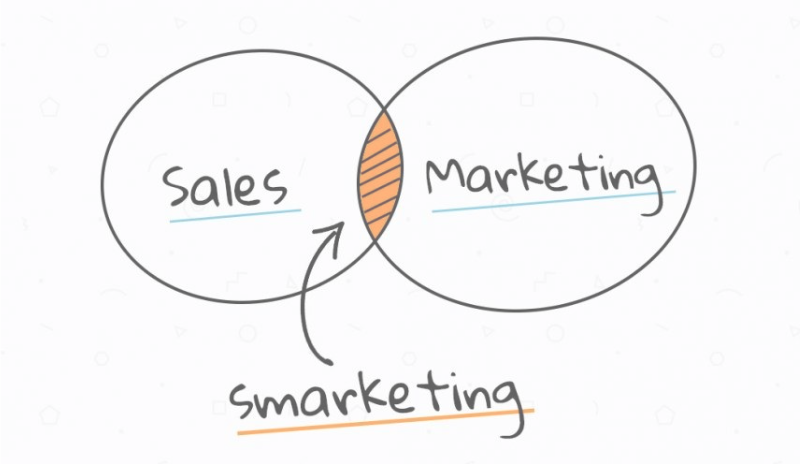If your business is creating content consistently as part of your overall inbound marketing strategy, you might assume that if you publish often enough, you’ll magically generate more traffic, leads and sales than you can possibly handle. However, the true story is very different.
What we see here at RedPandas is that when businesses publish a lot of content, they do get periodic spikes in traffic, but the translation of that traffic to sales is a slower burn. Why is this and can you quickly turn content into revenue?
In this article, we’ll be answering this question. In particular, we’re going to explore:
What is Assignment Selling?
Assignment Selling is when we assign “homework” to our prospects in the form of educational blog articles or videos anytime during the sales cycle.
Assignment Selling can be implemented at various stages of the sales cycle; before the first sales call, after the first sales call, before a deal is signed, and so on.
Examples of Assignment Selling
An example of Assignment Selling in practice might look something like this:
“Hi, Harry! I’m looking forward to meeting with you next Wednesday. I’ve attached a guide to read before our meeting that will answer all your questions in advance and go over options you need to consider. This way, when we meet, we can make the most of our time together and focus on your specific needs. If you can’t read this before our meeting, let me know and I will reschedule for a better time. Can you confirm you’re able to do this before Wednesday?”
This is so effective for a bunch of reasons:
- Gives a definitive “why” this assignment is important from the perspective of the buyer (it will answer your prospect’s questions so you can better use your time together).
- Offers a tease about what’s in it for them
- Shows your prospect that it’s important to complete the assignment before meeting with you (if they can’t get to it, you’re rescheduling).
- Asks for confirmation they will complete the assignment (so you can be sure when you go on that sales call, you’re not wasting your time).
- Importantly, it positions you as an authority, a trusted advisor and not just another salesperson trying to hit commission.
What to do if Prospects Say “No”?
Firstly, let’s assume you’re not giving them a ton of homework and like the example above, you are clearly demonstrating the value of completing the assignment for the buyer.
If someone isn’t willing to make time to read your content, then education doesn’t matter to them and they’re basing their decision on price. If this is the case, they’re probably not a good fit for you.
Do you want to work with people that are only shopping on price? If you do choose to work with these prospects, you’ll always be undervaluing your products and services, and whenever a competing company finds a way to sell a similar product or service cheaper than yours, where do you think your customers are going to go?
If someone isn’t willing to do the assignments, you can say something like, “This will prevent you from making mistakes and will help us make the best use of our time, but if you can’t, it’s OK. It just means we aren’t a good fit.”
It might sound brutal at first but remember, you’re evaluating the prospect for a right fit as much as they are evaluating you.
You are the teacher, and it’s your right to ask your prospects to learn what you put your time and effort into creating. Selling is an equal partnership, where you are educating your prospect on how to find the best solution for their problems, and as such, they owe you their time in return.
To sum all of this up; when we have a formal Revenue Team meeting where sales team members help marketers write articles that answer buyer questions and concerns, and when salespeople use Assignment Selling in their process, you’re going to get a result where traffic, leads, and most importantly sales, all increase in tandem with each other.
You can learn more about implementing Assignment Selling by learning about They Ask, You Answer, or talk to an advisor if you have questions about how this could work for your business.
The Impact of Assignment Selling
Assignment Selling ultimately increases sales close rates and decreases the length of the sales lifecycle, ultimately resulting in more business revenue.
However, there are also other positive impacts that Assignment Selling has on your company. Let’s take a look at these.
More sales because you’re now a trusted advisor, not a salesy salesperson
When you educate your prospects through content, your prospect ends up seeing you as a trusted advisor as opposed to a salesperson, because you’re helping your prospect actively solve their problems and become educated on the solutions to solve their problems via content.
The truth is, no one wants to be sold to. However, when you’re perceived as a trusted advisor, the game changes completely. Prospects want to talk with you, and they want you to help them. This makes sales significantly easier to tackle.
Assignment selling has this profound effect of subconsciously reframing in the mind of your prospect that they need to sell and prove themselves to you as opposed to the other way around.
Saves time on education
We usually spend too much time educating prospects on our sales calls and not enough time actually selling. The truth is, educated prospects are much more likely to buy from us, so it makes sense that we would want to educate our prospects.
We have two choices: we can either educate our prospects over the phone, or we can let our content educate our prospects and spend our time on the phone selling and bringing in revenue.
When we do this, we shorten the sales lifecycle, increase our sales close rates, and save our salespeople a bunch of time.
Strengthening good-fit leads and weeding out bad-fit prospects
These assignments act as a qualifying mechanism that helps bring the right customers to your salespeople and sends bad-fit prospects away, so that your salespeople don’t waste their time.
How does this work?
When we give Assignments to our prospects, there are only three possible options:
- The prospects read our assignment but doesn’t complete it, however they still show interest in purchasing from us.
- The prospect reads our assignment, doesn’t complete it, and is no longer interested in buying from us.
- The prospect reads our assignment, completes it, and is interested in buying from us.
In cases 1 and 2, we’re best to NOT work with these prospects. For example, if you were to work with a customer who is excited and interested in working with you but who isn’t educated on the process, tools, and more involved in the project, then the project probably won’t run as smoothly as it could. In this case, you end up wasting more time educating the prospect during the sales call and during the project, which slows everything down and wastes time and money.
On the other hand, when the prospect completes the assignment, you save time on education and you have a smoother project experience, which ultimately leads to a happier customer and a repeat-customer – in other words, more revenue and more wins for everybody involved.
You might be thinking, “our target audience isn’t really interested in reading blog articles”. However, you couldn’t be further from the truth. More often than not, our buyers are willing to consume more content than we think. If we integrate content into our sales process using Assignment Selling, we’re going to be dramatically more successful.
Closer to the magic number 30
If a prospect visits 30 pages or more of a website, there is an 80% chance that they’ll buy. If they view 30 pages or fewer, there’s a 15-20% chance that they’ll buy.
This statistic, which was discovered by Marcus Sheridan when he tested groups of buyers to find what factors influenced their buying decision, is the key that underpins the concept of Assignment Selling.
It helps increase our close rates and shortens the sales cycle, because prospects become educated and move closer to that having viewed 30 pages or more.
Once Marcus discovered this, he began assigning prospects at least 30 pages to read before each sales call to see if it would help closing rates. After implementing this process, his closing rates went from 25-30% to over 80%.
When we use Assignment Selling, we move closer to this magic number and the positive impact that comes with it.
Using Assignment Selling with Video
Leveraging video as opposed to blog articles with Assignment Selling can produce some pretty significant results.
Instead of sending your prospect an email with homework to finish reading a blog article, you can instead ask your prospect to watch an educational video or webinar. This works better for three reasons:
- Videos are better at persuading a user to purchase a product or service than any other form of content. For example, 84% of people say that they’ve been convinced to buy a product or service by watching a brand’s video (HubSpot).
- With video, you can see if your prospect has watched the video to completion by using certain video tools like Loom or Vidyard. This gives you power to see whether or not prospects are actually completing your Assignment Selling homework.
53% of sales pros who use custom-recorded video report that is has increased their close rates.
When we use video in the Assignment Selling process, we can speed up its effect and create extraordinary results quickly.
Assignment Selling Won’t Work If You Don’t do This…
So, you’re producing content consistently, traffic has started to pick up, but for some reason, the number of sales you’re making isn’t really changing. Why is this happening and what can you do about it?
Usually, this happens for one reason: marketing and sales aren’t aligned, resulting in blog articles being written that don’t answer buyer concerns and questions.
And when marketing and sales aren’t aligned, it’s impossible for the sales team to utilise assignment selling to increase their close rates and shorten the sales cycle.
If the main requirement of article generating content is that it speaks directly to your customer concerns and questions, then who in the business would be best at revealing what these concerns and questions are?
That’s right, the sales team. They are on the frontline, dealing with prospects every single day, and because of this, they know better than ANYONE else in your company the questions and concerns that your prospects have.
However, when the marketing team sits in their own silo, separate from the sales team, they end up writing content that, while being entertaining and interesting, does not directly speak to the customer’s main questions and concerns. And how can you blame the marketer? Sure, they can create their buyer personas and build content based on this, but it’ll never hit the nail on the head – it’ll never be just right.
That’s why it’s absolutely essential to get the sales team involved in the content ideation process, so that they can provide rich, real, necessary information for the marketer to utilise.

Unfortunately, more often than not businesses don’t align sales and marketing, resulting in increased traffic and leads with no real impact on sales. This is why businesses struggle to dramatically increase sales.
Why The Revenue Team is Key to Generating Sales
Getting your sales and marketing teams working together all starts with forming a formal Revenue Team.
The Revenue Team meets weekly or fortnightly and is made up of key players from your sales and marketing teams. The revenue team’s main goal is to increase company revenue, and they do this by developing and executing content to be used in the sales process to accelerate the sales cycle.
In other words, the marketing team sits down with the sales team and finds out the exact customer questions and concerns that the sales team deals with, and then the marketing team produces articles around these. Once the articles have been produced, the sales team uses those articles in the sales process as educational tools to provide prospects with at different stages of the sales cycle, depending on the specific questions and concerns that the prospect has.
Because the sales team was involved in the content creation/ideation process they actually respect the content, use the content in their sales conversations and provide feedback to the marketing team with what is working and what isn’t.
Our experience shows that once a Revenue Team is established and content is being generated and used, the sales cycle is shortened and close rates improve significantly because they do the obvious job of proactively answering buyer questions and concerns.
When articles that DIRECTLY answer prospects’ questions and concerns are produced in tandem with the sales team, a strange thing happens. Your company is perceived as the trusted voice in the space, and everyone wants to buy from your company, because trust is the emotion that guides the buying exchange. And it is this, which is the key to success.
If you need guidance on setting up a revenue team for your business, you should learn more about the framework called They Ask, You Answer (TAYA), and then, if TAYA Coaching is right for you, reach out to us here.
How to Best Prepare Your Company for Effective Assignment Selling
There are a few things you need to do in order to get your company prepared for effective Assignment Selling, these include:
- Get buy-in from sales and leadership
- Hire a content manager
- Form a revenue team
- Build an internal content management system
Get Buy-in From Sales & Leadership
Your entire company must be bought into the mission of becoming the #1 Teacher in your industry, with an obsession on answering all of your ideal buyer’s questions as honestly and thoroughly as possible.
Chances are, you’ll be met with resistance when trying to get buy-in from sales and leadership. It’s only natural, humans resist change, and implementing this system is a BIG change (but a necessary one).
Most will say they don’t have the time or it’s not worth it, but this is an indicator that they don’t see the value in it BECAUSE they don’t understand it. And this becomes your responsibility to educate them so that they can see the value in this system.
How Can You Educate Your Team on They Ask, You Answer?
The first step is to make sure everyone in your team has read They Ask, You Answer. The second step would be to get everyone to read our Comprehensive Guide on They Ask, You Answer. And then, you should have a formal meeting with your sales team, marketing team, and leadership to discuss the framework, the benefits of it, and the fact that it must become a company focus to implement it. Once you’ve done this, then you can ask these questions to test whether you truly have buy-in from sales and leadership:
- Does your website adequately educate prospects about the thing you do, and are you willing to address your buyers’ questions?
- Do you all agree that establishing trust is what ultimately gets a prospect to buy?
- Should your sales and marketing teams focus on establishing trust with buyers?
- Do you believe buyers’ habits have changed?
If your sales team and leadership agree on these points, then you’ll be in a better position to use Assignment Selling to dramatically increase sales.
Hire a Content Manager
You will need just one person who purely owns the content production, focusing on picking the right content marketing tools, creating the publishing calendar, writing content, interviewing subject matter experts – everything. This is what we call the Content Manager.
It’s important to hire someone full time for this position who isn’t wearing a bunch of hats, otherwise this will never get done. A good Content Manager should:
- Love and have a passion for writing – they’ll be writing A LOT, so it’s important that they actually enjoy the process of writing.
- Have strong communication and interviewing skills. They’ll need to interview subject matter experts in order to get the information they require to write their articles.
- Possess the top soft skills that a marketer requires, including drive, passion, and attention to detail.
Form a Revenue Team
If you truly want to implement Assignment Selling, you’re going to need to establish a Revenue Team so that your marketing and sales teams can work as one.
This is a fundamental step in the process. Every week, the Revenue Team should meet to:
- Brainstorm which pieces of content your sales team can use in their selling process to close deals faster,
- Understand what content isn’t useful to the sales team so that marketing won’t waste time creating it.
By doing this, you can ensure that content which can be used in the sales process is being developed, and sales can confidently use this content by implementing Assignment Selling.
Build an Internal Content Management System
You need to have an internal resource where sales can easily find the content they need and share it. Sales team members already have so much to do, so it’s important to make it easy for them to find the content that they need to use in the sales process. On top of this, you need to make sure your system notifies sales team members when new content is created.
There are many tools you can use to store and organise this content for sales team members. Some of these include:
To sum up, there are a few things you need to do in order to get your company prepared for effective Assignment Selling, which includes:
- Get buy-in from sales and leadership
- Hire a content manager
- Form a revenue team
- Build an internal content management system
How to Use the Assignment Selling Process
So, we know what Assignment Selling is and we know how to prepare for it’s use in our company, but how do we actually use Assignment Selling?
The key to using Assignment Selling is to map out an Assignment Selling Timeline. This means mapping out your sales journey and then preparing specific Assignments for each part of that sales journey. For example, the ‘Sales Qualified’ stage might require different homework to the ‘Presented Offering’ stage, for example.

In the above sales journey we can see various different stages, including:
- New Lead
- Attempted to contact
- Sales qualified
- Scoping / auditing
- Presented offering
- Quoted
- Lost
- Customer
- Potential future
- Unserviceable
In each of these stages, we could have very specific pieces of content that we want to use as homework in the Assignment Selling process. In the earlier stages, we want to send emails with links or documents that answer top-of-the-funnel questions. An example of this might look like:
“Thanks so much for filling out that form. We bet you have a bunch of questions about xyz, and we’ve produced a guide that’s going to walk you through them.”
In the earlier stages, we want to be mindful of the time it takes to complete assignments to prevent loss. The shorter the time it takes while still providing value, the better.
In the middle and later stages of the sales journey, you can start focusing on assignments that help prospects decide whether or not you’re a good fit for them. For example, you might include blog articles around pricing, or comparing competing businesses in your industry. In the latest stages of the cycle, you might include content that teaches buyers how they can best prepare working with you, what the process is like, and so on.
Ideally your Revenue Team should meet frequently to brainstorm which assignments go out at which point of the sales journey, and this process should be refined over time. Every piece of content should be extremely intentional and should help your prospects move further toward a sale or out of your pipeline.
So, what’s next?
So, you’ve decided you want to use Assignment Selling in your business to increase sales close rates and shorten the sales cycle?
Great! Here’s your next best steps:
- Learn about the framework of ‘They Ask, You Answer’ (TAYA)
- Write blog articles that rank and generate leads
- Read a copy of the ‘They Ask, You Answer’ book
- Get in touch with one of our TAYA Coaches to learn more about how you can implement this for your business












